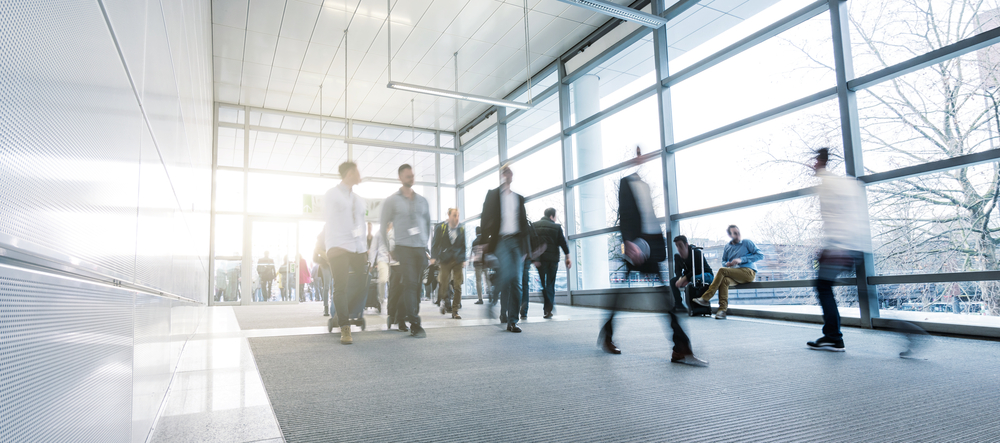We surveyed employees on all things hybrid working and office
Published by Admin on Dec 13, 2023

In the wake of the pandemic, the hybrid working movement has taken the business world by storm.
For many professionals, five days a week in the office is a thing of the past – but what do hybrid employees really think of the changes? And, crucially, what insights can office landlords take from the findings to improve their workspaces and boost occupancy?
And so, infinitSpace surveyed 1,262 part-time and full-time employees in the UK to find out some answers to these all-important questions.
From how hybrid working is shaping career decisions to what will really get employees back into the office, here’s what we found out...
The state-of-play for hybrid working
Let’s start with a little context and establish just how much traction hybrid working has gained in the UK.
At present, over a quarter (28%) of UK employees enjoy the benefits of hybrid working arrangements, while the remaining 72% do not. But we have to bear in mind that a third (34%) are in jobs that do not allow for such flexibility – think teachers, doctors, construction workers, and other professions requiring physical presence.
So, for those in desk-based roles where hybrid working arrangements would be possible...
- 44% are working in a hybrid model, combining office and remote working.
- 30% are in the office all the time.
- 22% are fully remote.
- 4% have other arrangements, be it coffee shops or outdoor working.
In terms of how much time is spent in the office, on average, those with hybrid arrangements spend 2.4 days per week in the office – a number that aligns closely with their ideal office attendance of 2.1 days per week.
High demand for hybrid working drives career decisions
Now let’s get into the more interesting findings. For one, our research highlighted that hybrid work has become so popular that it is making its mark on workers’ career decisions.
Of those employees who changed jobs since the start of 2022, a remarkable 43% cited better remote or hybrid working policies as a motivating factor for their decision.
Looking ahead, 47% of respondents considering a job change before the end of 2024 listed finding a better hybrid working policy as a key factor in their next move.
It comes as no surprise, therefore, that the shift towards more flexible work patterns was largely viewed as the silver lining of the pandemic. Indeed, 80% of office, hybrid and remote workers agree it is the best thing to have emerged from the challenging Covid period.
Despite this skyrocketing demand for flexibility, 30% of survey respondents still reported that their employers do not offer the working arrangements they desire, indicating that there’s still work to be done to bridge the gap between employee preferences and employer policies.
What’s bringing employees into the office – and what’s keeping them away?
While the flexibility of hybrid arrangements offers undeniable benefits, our survey revealed that there are still compelling reasons for teams to come into the office.
The five most significant attractions for hybrid employees to come into to their workspace include:
- The opportunity to catch up and build relationships with colleagues (49% said this was something they really enjoyed about being in a workspace)
- Getting a change of scenery from the house (45%)
- Easier collaboration on ideas and projects (28%)
- The positive impact on general wellbeing (26%)
- The opportunity to network with other businesses/people in the building/workspace/area (20%)
On the other hand, various factors were at play in dissuading employees from commuting into the office more frequently.
The top five barriers deterring employees include:
- The cost of commuting (44% cited this as something they do not like about heading into a workspace)
- Having an unpleasant commute (43%)
- Being less efficient (28%)
- Having a superior work-from-home set-up (24%)
- Having no, or not enough, free perks (18%)
How landlords can catapult their workspaces to success
So, what can landlords learn about improving their own workspaces from these findings?
As employees increasingly demand flexibility, workspaces that can accommodate this new dawn of hybrid working with scalability and adaptability will move to the front of the queue for prospective tenants.
It’s also clear that designing an environment that fosters a sense of community, connection and collaboration, and boosts to general wellbeing, are vital considerations when creating a workspace that will successfully attract and engage occupants. This in turn would lead to longer tenancies and higher occupancy rates overall.
Meanwhile, equally valuable lessons can be learned from the factors stopping employees from coming in. Yes, some factors like a costly and unpleasant commute may be outside a landlords’ control (beyond carefully considering location in future investments), but the secret to attracting and retaining tenants is building a workspace that is worth commuting in for – for example, by offering appealing perks, putting on exciting events, and designing ergonomic spaces that boost productivity. Indeed, 38% expressed a willingness to go into the office more frequently if the workspace itself were improved.
Putting these insights in action is where partnering with a flexible workspace operator like infinitSpace comes in. There’s no reason why transforming existing offices into modern, attractive flexible workspace has to be a challenging undertaking for landlords – we can seamlessly guide them through this process.
Thanks to our years of sector expertise, flexible workspace projects can be easily managed in a stress-free, cost-effective manner. From conception to operation of the workspace, infinitSpace can handle it all.
Keen to find out more about how you can best align your workspace with the needs of the modern workforce? Get in touch with the infinitSpace team today!
